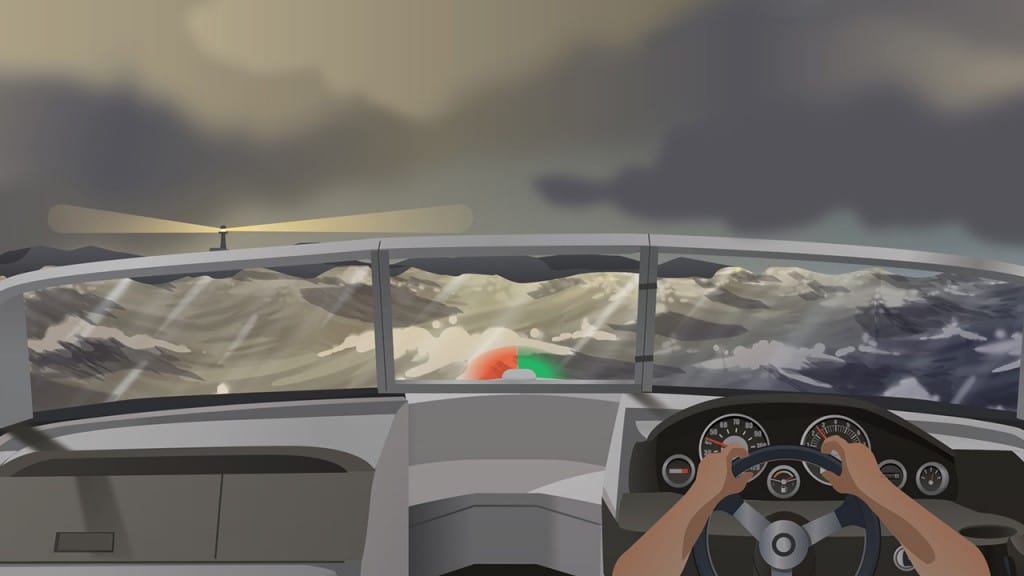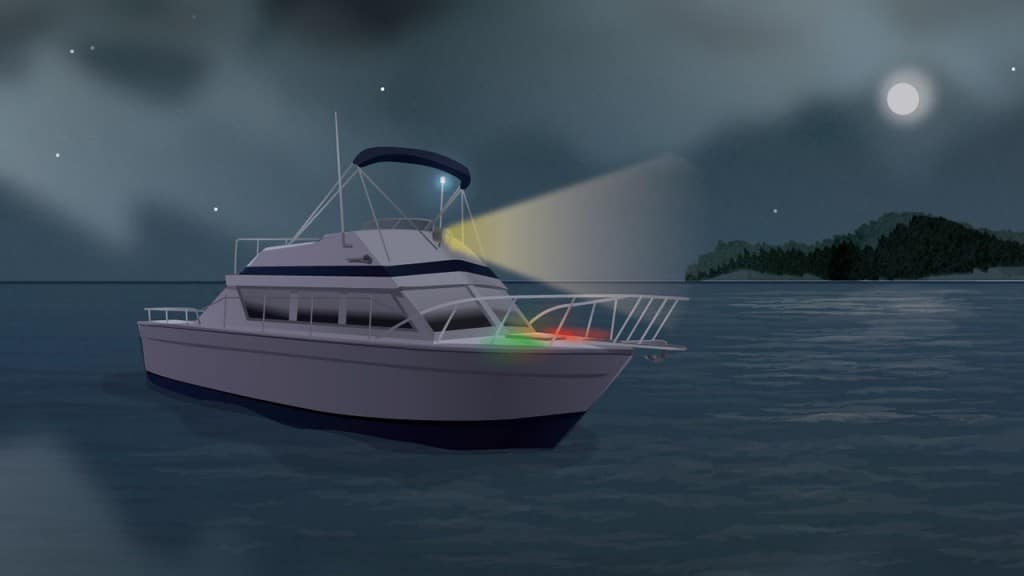Handling Rough Water Conditions
When boating in rough water you should adjust your boat’s speed as appropriate to the water conditions. Slow down and use caution. Adjust your speed so that the bow of your craft does not become buried in a wave. You should never attempt to jump waves.
If you find yourself in increasingly high seas, you should make your way to a sheltered mooring, such as a protected bay, cove or breakwater. If wave and water conditions make it unsuitable to operate safely, immediately set anchor and signal your need for help.
Crossing a Wake
When attempting to cross a wake, you should reduce your speed and alter your course to cross the wake at a 45° angle. Be aware of traffic that may be in your path as you cross to the other side of the wake. Once you have crossed the wake, resume your speed and course.
PWC operators should cross the wake at a 90° angle. Doing so will help maintain lateral stability. You should never attempt to jump a wake.
Operating in Bad Weather
Operating in bad weather is primarily a matter of avoiding collisions. Use the following techniques to avoid collisions in bad weather:
Proceed with caution: Be able to stop in a short distance rather than having to resort to unexpected evasive manoeuvers
Place lookouts: If you have passengers onboard, place them near the bow and stern as effective lookouts–operate with caution during high wave conditions when other craft may not be visible
Look and listen: You and your passengers should ‘look out’ for other craft and navigational aids by both sight and hearing
Navigation lights: Use your craft’s navigation lights during periods of restricted visibility to alert other boaters to your position
Stop your engines: If you are underway in heavy fog, stop your engines at specific intervals to listen for fog signals from other vessels or from marker buoys
Use your radar: Radar is your best option when visibility conditions are reduced–if you have a passive radar reflector it should be displayed during periods of restricted visibility





